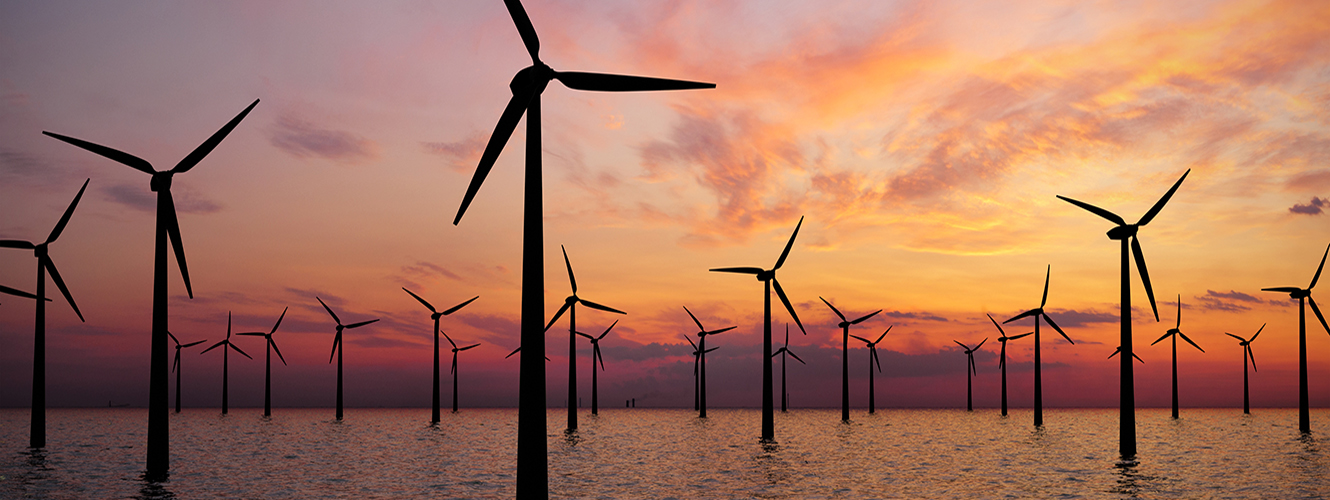
Fisher German welcomes the announcement that the government is to invest in offshore wind farms, but warns that there will need to be major investments in infrastructure to ensure targets can be achieved. We ask our experts in utilities & infrastructure, and sustainable energy, their views on the 2030 pledge.
Giles Lister, head of utilities and infrastructure, said: “While the target of powering every home by wind-generated electricity by 2030 is achievable, there are major planning constraints both in terms of the offshore farms and onshore infrastructure. Last year wind turbines accounted for 17 per cent of the UK’s energy needs. The new targets set by government require an increased output of 13 per cent which would need the associated assets to almost double. Any wind farm needs to connect to the National Grid which transports electricity around the country, but with this already at full capacity, the infrastructure needs to be upgraded to take the additional power.
This presents further planning constraints, as well as land and environmental issues, which will require significant investments from both the National Grid and the distribution network operators (DNOs) who deliver electricity to the end user. While offshore investments are welcome, we would also urge the government to consider investing in onshore wind and solar which is significantly easier and less costly to connect to the grid and would support the delivery of these targets.
As net zero emissions targets draw closer, there will be a significant increase in demand for electricity as electric vehicles become increasingly popular. This means we will require a co-ordinated approach between the government, National Grid and DNOs to ensure that there is an economic and efficient solution to overcome the current transmission issues in the UK.
Infrastructure projects such as this can take seven to 10 years from inception to completion, so it is clear that this joined up approach needs to be considered now to ensure targets can be delivered.”
Harry Edwards, Associate in our sustainable energy team, added: “Investment in the wind sector and increased output should be a shot in the arm for the nascent large-scale battery storage sector, which will be required to balance the grid network, due to the intermittent generation profile of wind. It is disappointing however that the announcement did not mention the cheapest form of wind power, onshore wind, and we would urge the government to consider that more needs to be done in this area.
For this sector to be brought back to life in England, the planning rules need to change. Onshore wind has been dormant in this country since 2015 due to a Ministerial Statement which requires onshore wind turbine development to be situated within ‘an area identified as suitable for wind energy development in a local or neighbourhood plan, and following consultation it can be demonstrated that the planning impacts identified by affected local communities have been fully addressed and therefore the proposal has their backing’.
Reversing these restrictions will be essential in the coming years as we look towards achieving carbon net zero by 2050, and we hope to see changes made to national legislation which make it easier to obtain planning permission for onshore wind turbines. As we look to reduce carbon emissions, incentives are also needed to propel the electric vehicle sector forward and also to help the ‘green’ hydrogen production sector, which will be key for cleaning up heavy transport.”
Follow all of our latest news and views on Linkedin and Twitter @FisherGerman.





